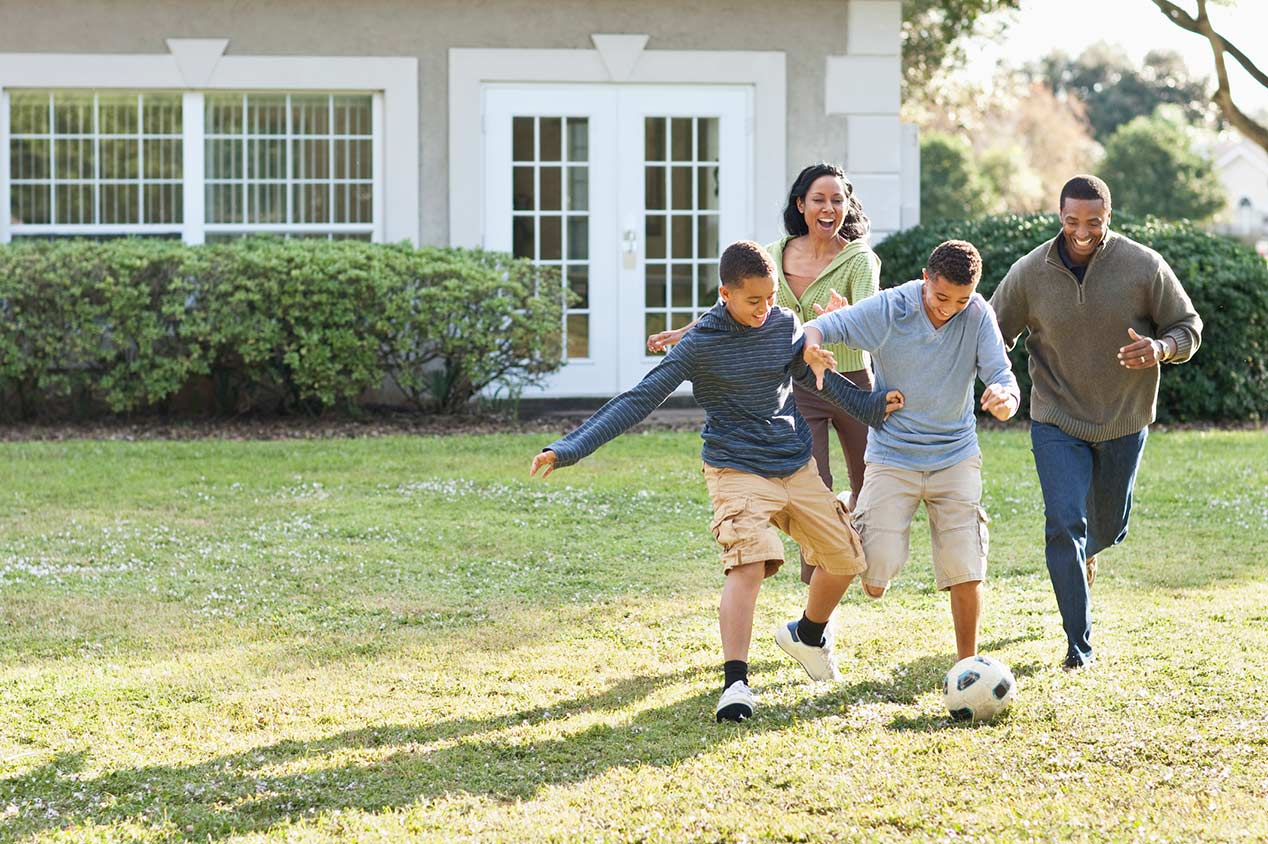
Photo: Kevin Dodge / Getty Images
Lawn seeding and installing sod are both methods for establishing a new lawn or repairing an existing one. However, there are some key differences between the two. Lawn seeding involves planting grass seeds directly into the soil, whereas sod installation involves laying down pre-grown strips of grass that are often held together by soil or another material.
Whether you should use sod or seed for your lawn depends on several factors, including the location and condition of the lawn, your budget, and how quickly you want to establish a new lawn.
In this article:
- What Is Lawn Seeding?
- What Is Sod Installation?
- Appearance
- Cost Upkeep
- Durability
- Installation
- Lifespan
- Environmental Impact
- Is a Seeded Lawn or a Sodded Lawn Better for Your Home?
- Seeding vs. Sodding vs. Hydroseeding
What Is Lawn Seeding?
Lawn seeding is a process for establishing or repairing a lawn by planting grass seeds directly into the soil. Lawn seeding is typically less expensive than sod installation, but it can also be more time-consuming, as it takes longer for the grass seeds to grow and establish a healthy root system.
What Is Sod Installation?
Installing sod is a process for establishing or repairing a lawn by laying down pre-grown strips of grass that are held together by soil or another material. Sod installation is typically more expensive than lawn seeding, but it also establishes a new lawn more quickly. Sod is best suited for areas with well-draining soil, and it can withstand heavy foot traffic and usage better than a newly-seeded lawn.
Appearance
Sod and seed can both produce a healthy, attractive lawn, but there are some differences in appearance to consider. Sod provides a mature, fully-grown lawn almost immediately after installation, whereas a newly-seeded lawn will take some time to grow and establish a strong root system. As a result, a sod lawn may have a more polished, manicured appearance than a newly-seeded lawn.
| Seed | Sod |
|---|---|
|
Indistinguishable from when mature |
A mature, full appearance immediately |
|
Can appear patchy until it matures |
May look uneven or gappy for a few weeks |
Seeded Lawn
A seeded lawn goes through several stages of growth as it matures. After the grass seeds are planted and begin to germinate, they produce a thin, patchy lawn that may not look very attractive. As the grass continues to grow and develop a strong root system, the lawn becomes thicker and more dense. With time, it becomes more uniform in appearance and will fill in any bare or thin areas. Eventually, the lawn will reach its full maturity, at which point it should be thick, lush, and green.
Sodded Lawn
A sodded lawn has a mature, fully-grown appearance almost immediately after installation. The sod strips are pre-grown and already have a well-established root system, so they quickly take root in the soil and begin to grow. A newly-installed sod lawn may have a slightly uneven appearance at first, as the sod strips may not fit together perfectly. However, this should resolve itself within a few weeks as the sod takes root and the grass grows together.
Over time, the sod lawn continues to mature and develop, becoming thicker and lusher as the grass establishes a deeper root system. Ultimately, a mature sod lawn should be thick, green, and uniform in appearance.
Cost
In general, sod is a more expensive option upfront, but it can save time and labor in the long run. Seed is a more cost-effective option, but it requires more time and effort to establish a mature lawn. Over the long term, a well-maintained seeded lawn can be just as cost-effective as a sod lawn.
However, if the seeded lawn is not properly cared for, it may not reach its full potential and may require additional maintenance or reseeding to maintain a healthy appearance. You’ll also need to factor in ongoing fees, such as the cost to aerate a lawn.
Seeding a Lawn
The cost of materials ranges from $100 to $500. Professional seeding costs an average of $400 to $1,300. Typically, homeowners spend around $850.
Sodding a Lawn
The cost of sod itself tends to be $170 to $380. Professional installation costs between $1,000 to $2,500, with an average spend of $1,800.
Upkeep
When it comes to maintenance, sod generally requires more immediate attention and care compared to seed. This is because sod is more susceptible to drying out and needs regular watering to ensure that the grass roots take hold and establish themselves in the soil. Seed, on the other hand, is more resilient and requires less immediate attention, although it does still need regular watering to ensure that it grows properly.
Seeded Lawn Maintenance
A seeded lawn requires regular watering, fertilizing, and weed control in order to establish a healthy root system and grow into a mature lawn. The exact maintenance amount depends on several factors, including the type of grass, the climate, and the soil conditions.
In general, a newly seeded lawn needs frequent watering, especially during the germination and establishment stages. This can be time-consuming and labor-intensive, depending on the lawn size and the irrigation system used.
In addition, a seeded lawn needs to be fertilized and treated for weeds to support healthy growth and prevent weeds from competing with the grass. A seeded lawn requires more maintenance than a sod lawn, at least during the establishment phase. Once the grass has reached its full maturity, the maintenance requirements may decrease.
Sodded Lawn Maintenance
In general, a sodded lawn needs to be watered frequently, particularly during the early weeks, when the sod is taking root in the soil. This can be a demanding task, depending on the lawn size and the irrigation system you use.
Just like seeded lawns, sodded lawns also need regular weed and fertilizer treatments for long-term health. Overall, a sodded lawn may require less maintenance than a seeded lawn during the establishment phase, as the sod is already fully grown and established when installed. However, once the sod has taken root and the grass has reached its full maturity, the maintenance requirements may be similar for both sod and seed.
Durability
When it comes to durability, there is no clear winner between seeded and sodded lawns. Both have their strengths and weaknesses, and the best choice will depend on your specific needs and preferences.
Seeded lawns are generally considered less durable than sodded lawns in the short term, especially during the first few weeks after planting. This is because the grass seeds are more susceptible to drying out, disease, and insect damage compared to established sod. However, once the grass seeds have germinated and the roots have established themselves in the soil, a seeded lawn can become very durable and long-lasting.
Start Your Reseeding Project NowInstallation
Both sod installation and lawn seeding can be challenging and labor-intensive processes, depending on the specific situation and the type of grass that is being used. Usually, though, sod installation is easier than lawn seeding, but you still need to know how to lay sod properly if you want a lush, healthy lawn.
This is because sod is a pre-grown product ready for immediate use, whereas seed must be planted, watered, and cared for until it germinates and establishes a healthy root system. Sod installation also typically requires less labor and effort than seed, as the sod strips are simply laid down and pressed into place, whereas seed must be spread evenly over the soil and planted at the recommended depth and spacing.
Lifespan
The lifespan of a seeded lawn and a sodded lawn can vary depending on various factors, such as the type of grass, the climate, and the level of maintenance and care provided. Both types of lawns can last for many years if properly cared for.
Seeded Lawn
Seeded lawns have the potential to last for a very long time because the grass plants grow from seed and can establish deep root systems. This allows the grass to withstand a wide range of environmental conditions and helps it grow and thrive for many years. But, because the initial establishment of a seeded lawn can be more challenging and time-consuming than a sodded lawn, it may take several seasons for the grass to fully mature. And, during the maturation period, it’s at a higher risk of insect, drought, and disease damage.
Sodded Lawn
Sodded lawns, on the other hand, are established using pre-grown grass that has been cut into sections and transplanted into the soil. This allows the grass to take hold and begin growing much more quickly compared to seeds, but it also means that the grass plants may not have as much time to develop deep root systems. As a result, the lifespan of a sodded lawn may be slightly shorter compared to a seeded lawn. However, with proper care and maintenance, a sodded lawn can still last for many years.
Overall, both seeded and sodded lawns have the potential to last for a long time. But each’s lifespan will depend on the type of grass, the climate, and the level of care, and maintenance provided.
Environmental Impact
The environmental impact of sod versus seed depends on a number of factors, including the specific grass varieties that are used, the climate and soil conditions, and the methods of installation and maintenance. In general, however, sod and seed can positively and negatively impact the environment.
Here are some potential environmental impacts to consider:
- Water usage: Both sod and seed require regular watering to establish and maintain a healthy lawn. Sod may require more water during the establishment phase, as it is a fully grown product and needs to take root in the soil. Once the sod has taken root, however, it may be more drought-tolerant than a seeded lawn. Seed, on the other hand, may require less water during the establishment phase, as the grass is still developing its root system. However, if the seed is not properly watered and cared for, it may not establish a strong root system and may be more susceptible to drought.
- Chemical usage: Both sod and seed may require chemicals, such as fertilizers and herbicides, to support healthy growth and prevent weed growth. Sod may require fewer chemicals, as it is already fully grown and established when installed. Seed, on the other hand, may require more chemicals during the establishment phase, as it is more vulnerable to weed competition and other pests.
- Carbon footprint: Sod has a larger carbon footprint than seed, as it is typically grown on specialized sod farms and transported to the installation site. This transportation can generate greenhouse gas emissions and contribute to air pollution. Seed, on the other hand, is typically grown locally and does not require as much transportation.
Overall, sod and seed have potential environmental impacts, and the best choice will depend on the specific situation and the installation and maintenance methods. It may be worth considering environmentally friendly grass varieties and techniques, such as using native grasses and practicing sustainable watering and fertilizing techniques, to minimize your lawn’s environmental impact.
Is a Seeded Lawn or a Sodded Lawn Better for Your Home?
Whether seed or sod is better for your home depends on your circumstances and preferences. Both seeded and sodded lawns have their advantages and disadvantages. Seeded lawns are typically less expensive and can be customized by choosing specific types of grass seeds. However, they can take longer to establish and may require more maintenance.
Sodded lawns, on the other hand, are quicker to establish and require less maintenance, but they are more expensive and offer less flexibility in terms of grass type. It’s important to carefully consider your budget, the amount of time and effort you’re willing to put into maintaining your lawn, and your desired outcome before deciding which option is best for you.
You’ll also need to consider your lifestyle and what your lawn needs to contend with. For example, if you have dogs, you’ll want to choose a grass that can tolerate the increased traffic and your pet’s urine. The best grass for dogs includes fescues, Bermuda grass, and Kentucky Bluegrass. Which one you choose depends on your climate and the soil’s condition.
| Factor | Sod | Seed |
|---|---|---|
| Appearance | Appears mature almost immediately | Patchy and thin for many weeks as it grows |
| Cost | $1,800, on average | $850, on average |
| Upkeep | Requires more maintenance to begin with to prevent it drying out | Seed requires less immediate maintenance |
| Durability | More durable than seed in the short term, but the same over the long term | More susceptible to damage in the short term, but has the same durability as sod long term. |
| Installation | Sod installation is easier than seed installation | Usually more time-consuming as the ground requires more preparation than laying sod |
Seeding vs. Sodding vs. Hydroseeding.
Seed and sod refer to different ways of planting grass. Seed refers to planting grass by scattering seeds over the soil, while sod refers to planting grass by laying down pre-grown strips of grass, also known as turf. Hydroseeding is a method of planting grass that involves mixing grass seed with water and other substances to create a slurry, which is then sprayed over the soil using a special hydroseeding machine. This method is often used for large-scale grass planting projects. Hydroseeding seeding costs $500 to $4,000, depending on the size of the area receiving service.
Start Your Reseeding Project Now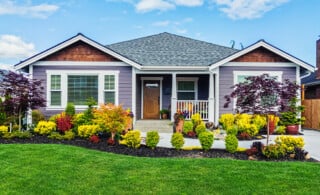 24 Tips for Low-Maintenance Landscaping
24 Tips for Low-Maintenance Landscaping 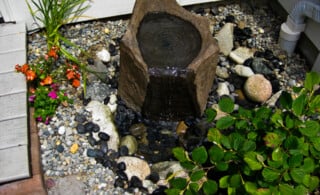 Garden Fountains: Making Mother Nature Come Home
Garden Fountains: Making Mother Nature Come Home 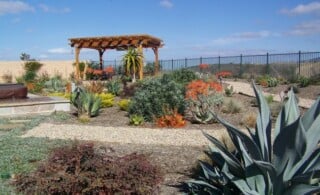 Xeriscaping: The Low-Water (Low-Effort) Landscaping Solution
Xeriscaping: The Low-Water (Low-Effort) Landscaping Solution 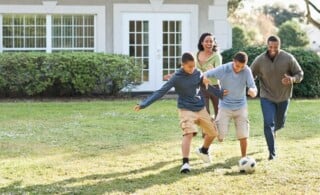 DIY Backyard Soccer Field: A Guide to Cost, Materials, and Legalities
DIY Backyard Soccer Field: A Guide to Cost, Materials, and Legalities 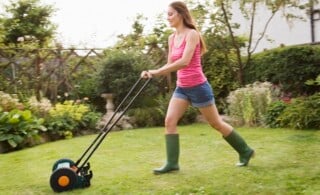 Lawn Lessons from Fertilization to Cleanup
Lawn Lessons from Fertilization to Cleanup 

Can’t stress this subject enough. The seasons are changing (dry to wet) here in southern california, and homeowners need to pay attention to which option they pick, especially with the impending restrictions on water useage.